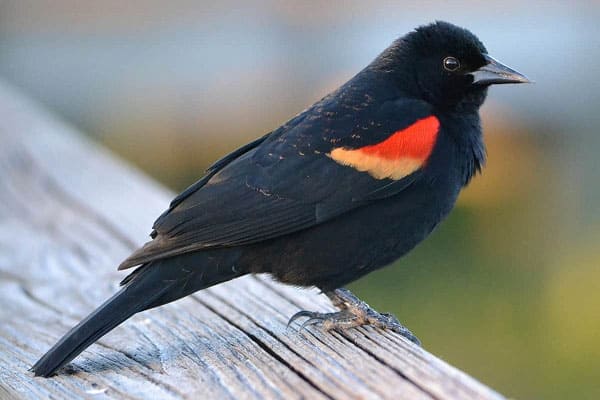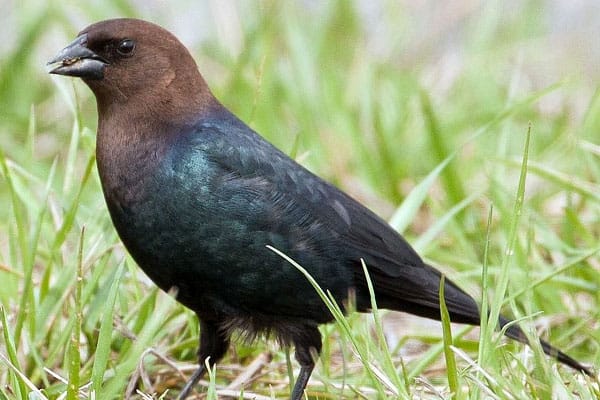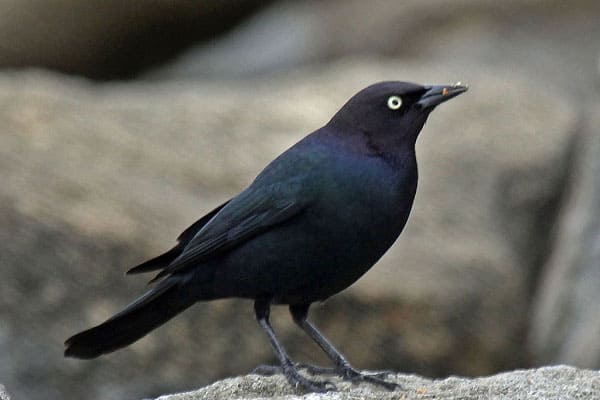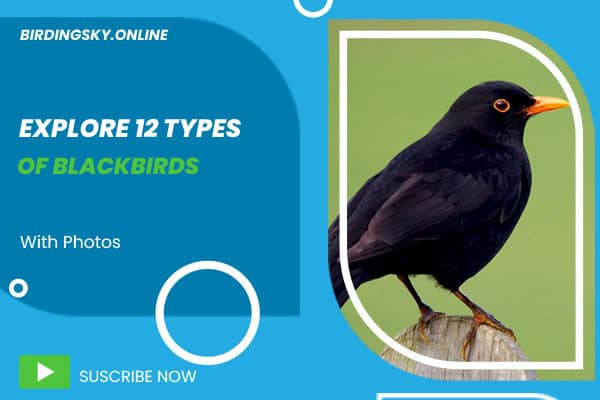Did you know that Colorado is home to an astonishing 16 different species of blackbirds? These avian wonders are a captivating part of the state’s diverse ecosystem, each with its own unique characteristics and behaviors. In this comprehensive guide, we will explore the remarkable diversity of blackbirds found in Colorado, providing detailed information and stunning photographs to help you identify and appreciate these fascinating creatures.
From the iconic red-winged blackbird to the enigmatic Brewer’s blackbird, Colorado’s blackbird community encompasses a wide range of species, each playing a vital role in the state’s natural landscapes. Whether you’re a seasoned birdwatcher or a curious nature enthusiast, this article will take you on a journey through the vibrant world of Colorado’s blackbirds, uncovering their physical attributes, habitats, and fascinating behaviors.
Join us as we delve into the avian riches of the Centennial State, and discover the true splendor of these remarkable blackbirds in Colorado.
Here We’ll Learn About 16 Types Of Blackbirds in Colorado!!
1. Red-winged Blackbird

The red-winged blackbird is a quintessential Colorado native, known for its vibrant plumage and distinctive vocalizations. With its jet-black body and brilliant red epaulets, this red-winged blackbird is a true standout among the state’s avian residents.
Physical Description and Habitat
Standing out with their striking appearance, red-winged blackbirds are easily recognizable by their physical description. Males boast a deep, black body with vivid red and yellow shoulder patches, while females sport a more muted brown and tan plumage. These blackbirds thrive in a variety of habitats throughout Colorado, with a preference for wetlands, marshes, and open fields where they can find ample food and nesting opportunities.
Unique Vocalizations and Behaviors
In addition to their captivating looks, red-winged blackbirds are renowned for their vocalizations and behaviors. Their familiar “conk-la-ree” call can be heard echoing across the state’s landscapes, and males are known to engage in elaborate aerial displays to attract mates and defend their territories. These blackbirds are also highly social, often forming large flocks that can be observed foraging and roosting together in Colorado’s diverse ecosystems.
2. European Starling

The European starling is a species that was introduced to North America in the late 19th century and has since established a significant presence in Colorado. With its striking iridescent plumage and adaptable nature, the European starling has become a common sight across the state. This section delves into the story of how this species came to call Colorado home and explores its physical attributes and behaviors that have contributed to its successful colonization.
Originally native to Europe and western Asia, the European starling was first introduced to the United States in 1890 when a group of just 60 birds were released in New York City’s Central Park. Over the following decades, these highly adaptable birds rapidly expanded their range, taking advantage of the abundant food sources and suitable habitats found throughout the country, including the state of Colorado.
The European starling‘s striking appearance is one of the key factors behind its success as an introduced species in Colorado. With its sleek, iridescent black feathers that shimmer with a metallic sheen, the European starling is a visually stunning addition to the state’s avian landscape. This unique plumage not only helps the bird blend in with its surroundings, but also plays a crucial role in its mating rituals and social interactions.
3. Brown-headed Cowbird

Among the diverse blackbird species that call Colorado home, the brown-headed cowbird stands out for its distinctive breeding approach. As we delve into the characteristics and behaviors of this unique bird, we’ll gain a deeper understanding of the intriguing adaptations that have allowed it to thrive in the state’s avian ecosystem.
Appearance and Range
The brown-headed cowbird is a medium-sized blackbird with a striking appearance. As its name suggests, the male of the species sports a rich, brown head that contrasts with its glossy black body and wings. Females, on the other hand, display a more muted plumage, featuring a grayish-brown hue. These birds can be found throughout much of Colorado, with their range extending across the state, from the eastern plains to the western slopes of the Rocky Mountains.
Brood Parasitism
The brown-headed cowbird’s most fascinating trait is its unique breeding strategy, known as brood parasitism. Unlike many other blackbird species, the brown-headed cowbird does not build its own nest or raise its young. Instead, it lays its eggs in the nests of other bird species, relying on its unsuspecting hosts to incubate and care for the cowbird’s chicks. This remarkable adaptation allows the brown-headed cowbird to avoid the energy-intensive tasks of nest-building and parental care, freeing it to focus on maximizing the number of offspring it can produce.
4. Downy Woodpecker

The downy woodpecker, a diminutive yet captivating member of Colorado’s avian community, is a frequent and welcome sight in many backyards across the state. While not technically a blackbird, this diminutive species is often mistaken for a smaller relative due to its distinctive black-and-white plumage and its energetic, acrobatic movements as it forages for sustenance.
Distinguishing Features and Habits
Easily recognized by its compact size, the downy woodpecker boasts a striking black-and-white appearance, with a white back, black wings, and a distinctive white patch on the lower back. Its small, sharp beak is the perfect tool for drilling into tree bark in search of insects, larvae, and other nutritious morsels. These downy woodpeckers are known for their agile, almost gravity-defying movements as they climb and cling to the trunks and branches of trees, exhibiting a remarkable level of adaptability and dexterity.
Ecological Importance and Conservation
Beyond their captivating presence in Colorado’s backyards, downy woodpeckers play a vital role in the state’s ecosystem. As insect-eating specialists, they help to control populations of harmful pests that can damage trees and gardens. Additionally, their habit of drilling nest cavities in dead or decaying wood provides important shelter and nesting sites for a variety of other bird species, contributing to the overall biodiversity of the local environment.
5. Dark-eyed Junco

As the winter months settle in across Colorado, one bird species becomes a welcomed and familiar sight in backyards and urban areas – the dark-eyed junco. This unassuming yet charming member of the sparrow family is known for its diverse plumage variations and fascinating migration patterns that bring it to the state as a delightful winter companion.
Plumage Variations and Migration Patterns
The dark-eyed junco is a true chameleon when it comes to its appearance, with several distinct plumage variations found throughout Colorado. From the classic slate-gray and white “Oregon” form to the warm, brown-backed “Slate-colored” variety, these subtle differences in coloration add to the bird’s visual appeal. But what truly sets the dark-eyed junco apart is its remarkable migration behavior, which sees these diminutive songbirds arriving in the state from their northern breeding grounds to spend the cold winter months foraging alongside us.
As the temperatures drop and the landscape transforms, the dark-eyed junco becomes a ubiquitous presence, flitting among the bare branches and hopping across snow-covered lawns in search of seeds and insects. Their cheerful, twittering calls and the flashes of white in their tail feathers as they flit from one perch to the next have become a cherished part of the Colorado winter experience for birdwatchers and nature enthusiasts alike.
By understanding the diverse plumage variations and the migratory patterns of the dark-eyed junco, we can gain a deeper appreciation for this unassuming yet captivating species that graces our state each winter, reminding us of the resilience and adaptability of Colorado’s avian residents.
6. Turkey Vulture
While not a blackbird per se, the turkey vulture is a prominent member of Colorado’s avian community, known for its majestic soaring and scavenging behaviors. With their impressive wingspans and distinct silhouettes, turkey vultures are a captivating sight as they glide effortlessly above the state’s rugged landscapes.
Identifying Traits and Soaring Behavior
The turkey vulture’s identifying traits include a dark, featherless head, a hooked beak, and a distinctive reddish-pink skin. Their wings are broad and their tails are short, allowing them to effortlessly ride thermal currents and cover vast distances with minimal effort. We often observe these magnificent birds circling high in the sky, using their keen sense of smell to locate carrion, their primary food source.
Ecological Role and Conservation Efforts
As nature’s cleanup crew, turkey vultures play a crucial role in the ecosystem by removing decaying organic matter, preventing the spread of diseases, and recycling nutrients back into the environment. However, despite their ecological importance, turkey vulture populations have faced various threats, including habitat loss, poisoning, and collisions with power lines and vehicles. Fortunately, conservation efforts, such as public education and habitat protection, have helped to sustain these majestic scavengers in Colorado and across the United States.
7. American Crow

The American crow is a ubiquitous presence across Colorado, known for its intelligence, adaptability, and distinctive calls. With its sleek, jet-black plumage and sharp, penetrating caws, the American crow is a familiar sight that has become an integral part of the state’s avian landscape.
Appearance and Vocalizations
The American crow boasts a robust, rounded body and a sturdy, pointed beak, characteristics that contribute to its imposing appearance. Their glossy black feathers shimmer in the sunlight, reflecting an almost iridescent hue. Perhaps the most distinctive feature of the American crow is its vocalizations, a diverse repertoire of caws, croaks, and other guttural sounds that can be heard echoing across Colorado’s urban and rural environments.
Social Structure and Problem-Solving Abilities
American crows are highly social birds, often seen foraging and roosting in large, noisy flocks. These intelligent creatures exhibit a complex social structure, with individuals recognizing each other and maintaining long-term relationships. Their problem-solving abilities are equally impressive, as American crows have been observed using tools, solving puzzles, and demonstrating impressive memory skills that allow them to thrive in a variety of habitats throughout the state.
8. Double-crested Cormorant
Among the diverse array of avian species found in Colorado’s waterways, the double-crested cormorant stands out as a skilled and efficient angler. These remarkable birds have adapted to thrive in the state’s aquatic environments, utilizing their unique physical attributes and specialized fishing techniques to successfully capture their prey.
Physical Attributes and Fishing Techniques
The double-crested cormorant’s streamlined body and powerful webbed feet make it well-suited for diving and maneuvering underwater. Its hooked beak, perfect for grasping slippery fish, and its black, iridescent plumage that helps to regulate its body temperature in the water, all contribute to the cormorant’s prowess as a fishing master. As we observe these birds in action, we’re captivated by their graceful dives and relentless pursuit of their finned targets, showcasing their remarkable hunting abilities within Colorado’s rivers, lakes, and reservoirs.
To catch their prey, double-crested cormorants employ a variety of techniques, from diving headfirst to plucking fish from the surface of the water. Their exceptional underwater vision and agility allow them to spot and pursue their quarry with extraordinary precision, often working in coordinated groups to maximize their hunting success. The cormorants’ ability to stay submerged for extended periods and their efficient use of their body heat to warm themselves after a dive make them formidable predators in Colorado’s aquatic ecosystems.
As we delve deeper into the fascinating world of the double-crested cormorant, we gain a greater appreciation for the remarkable adaptations and behaviors that enable these birds to thrive as skilled anglers within the diverse waterways of Colorado.
9. Common Grackle
The common grackle is a familiar and eye-catching resident of Colorado’s backyards, captivating us with its striking iridescent plumage. As we explore the distinguishing features and unique behaviors of this adaptable blackbird species, we gain a deeper appreciation for the common grackle’s place within the state’s diverse avian ecosystem.
Distinguishing Features and Behaviors
The common grackle is a large blackbird, easily recognizable by its sleek, glossy black body and long, wedge-shaped tail. Its most distinctive feature, however, is the iridescent sheen that covers its head, neck, and upper body, which can appear greenish, purple, or bronze depending on the angle of the light. This vibrant plumage, combined with the grackle’s bold and assertive behavior, makes it a standout among the common backyard birds in Colorado.
Check Our Previous Posts:
Grackles are known for their varied vocalizations, which include a harsh, grating “chack” call, as well as a melodious, gurgling song during the breeding season. They are also highly adaptable and opportunistic foragers, readily taking advantage of a wide range of food sources, from insects and seeds to scraps from human settlements. This adaptability has allowed the common grackle to thrive in both rural and urban areas throughout the state.
Habitat Preferences and Nesting Habits
The common grackle’s preference for diverse habitats, from open fields and wetlands to parks and suburban neighborhoods, has contributed to its success in Colorado. These birds often build their nests in trees, shrubs, and even on human-made structures, such as ledges, eaves, and even streetlights. The nest is a cup-shaped structure made of twigs, grass, and other plant materials, where the female lays 3-5 eggs and incubates them for approximately 13 days.
Once the chicks hatch, both parents work tirelessly to provide them with food, often bringing a variety of insects, grains, and even small vertebrates back to the nest. As the young grackles grow and fledge, they may join communal roosts with other grackles, forming large, noisy flocks that can be a common sight in many Colorado communities.
10. Brewer’s Blackbird

The Brewer’s blackbird is a common sight across the western regions of Colorado, known for its striking appearance and lively, gregarious nature. As a resident species, these resilient birds have adapted remarkably well to the diverse ecosystems found throughout the state.
Appearance and Vocalizations
Instantly recognizable with their lustrous, iridescent plumage, Brewer’s blackbirds boast a sleek, all-black appearance, save for their bright yellow eyes. The males, in particular, display a stunning sheen that can appear almost metallic in certain lighting conditions. Their vocalizations are equally captivating, with a repertoire that includes a variety of whistles, clicks, and gurgling sounds that add to the dynamic soundscape of Colorado’s avian communities.
Flocking Behavior and Breeding Ecology
One of the most distinctive traits of the Brewer’s blackbird is its tendency to form large, cohesive flocks, often mingling with other blackbird species. These flocks can be seen congregating in fields, pastures, and even urban areas, where they forage for insects, seeds, and other food sources. When it comes to breeding, Brewer’s blackbirds exhibit a fascinating colonial nesting strategy, with multiple pairs often constructing their nests in close proximity to one another, creating a vibrant, interconnected community.
Through their adaptable behavior, impressive vocalizations, and unique flocking and breeding habits, Brewer’s blackbirds have become an integral part of Colorado’s avian landscape, captivating birdwatchers and nature enthusiasts alike with their remarkable presence in the state.
11. Common Raven
The common raven is a highly intelligent and adaptable corvid found throughout the state of Colorado. With its striking black plumage, hooked beak, and distinctive croaking call, the common raven is a familiar sight and sound in the region. As we explore the physical characteristics and geographical range of this remarkable bird, we’ll also delve into its impressive cognitive abilities and the cultural significance it holds in Colorado’s rich history and folklore.
Physical Characteristics and Range
The common raven is a large, all-black bird with a wingspan that can reach up to four feet. Its thick, curved beak and wedge-shaped tail are distinctive features that set it apart from other corvids found in Colorado. The common raven is a highly adaptable species, thriving in a variety of habitats, from the rugged mountains to the arid deserts, and even in urban areas across the state.
Cognitive Abilities and Cultural Significance
The common raven is renowned for its exceptional intelligence, possessing advanced problem-solving skills and a remarkable memory. These corvids have been observed using tools, caching food for future use, and even solving complex puzzles. In the rich cultural tapestry of Colorado, the common raven has long been revered, often appearing in Native American folklore and mythology as a symbol of wisdom, trickery, and even creation.
12. Yellow-headed Blackbirds in Colorado
Among the vibrant members of Colorado’s blackbird community, the yellow-headed blackbird stands out with its striking appearance and affinity for wetland habitats. With its vibrant golden head, jet-black body, and brilliant white wing patches, the yellow-headed blackbird is a true sight to behold as it navigates the state’s marshes and waterways.
As marsh dwellers, these blackbirds thrive in the lush, aquatic environments found across Colorado. Their preference for cattail-laden wetlands and open water habitats allows them to take advantage of the abundant food sources and nesting opportunities these regions provide. With their distinctive calls and energetic behaviors, yellow-headed blackbirds have become an iconic part of the state’s diverse avian landscape.
Exploring the unique characteristics and behaviors of the yellow-headed blackbird offers a deeper appreciation for the resilience and adaptability of these remarkable birds. Their vibrant plumage and specialized habitat requirements make them a captivating subject for birdwatchers and nature enthusiasts alike, highlighting the rich diversity of Colorado’s blackbird species.


Add comment